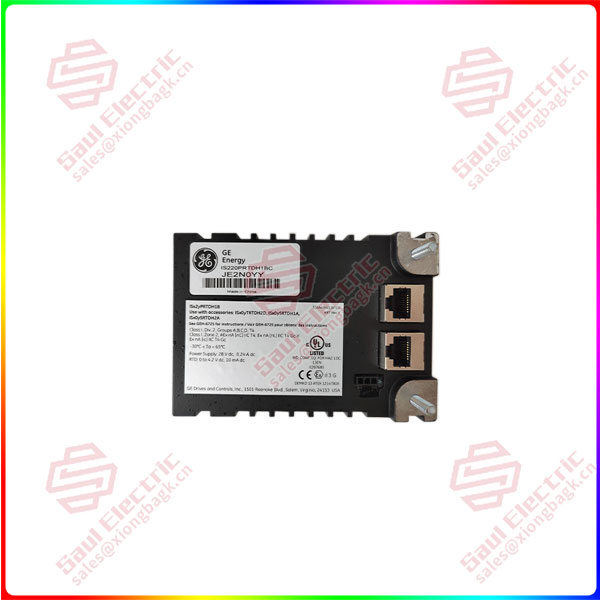The IS220PSCAH1B, manufactured by GE General Electric, is an I/O module in the Mark VIe family for serial communication. Designed for the GE Speedtronic Mark VIe family of control systems, this module provides a flexible platform for a variety of applications, including high-speed networked I/O for simple, duplex and triple redundant systems. The IS220PSCAH1B is a multi-printed circuit board (PCB) module with multi-layered surface mount (SMD) components available in multiple versions of I/O packages.
The IS220PSCAH1B module has dual 100MB full duplex Ethernet ports and is able to exchange data with other devices through these ports. It is powered by a three-pin power input and two RJ45 Ethernet connectors, and the output is achieved by a DC-62-pin connector that connects directly to the associated terminal board connector. The module also features self-diagnostic tests that monitor analog inputs, such as position and pressure, and check configurable high and low levels that enable/disable features, latch/non-latch, and generate alarms.
When installing the IS220PSCAH1B, ensure that the terminal board is securely installed, then insert the I/O module into the terminal board connector and secure it mechanically using the threaded ferrule next to the Ethernet port. Depending on the system configuration, you may need to connect one or two Ethernet cables and connect to the power supply through connectors on the side of the module.

IS220PRTDH1B
The IS220PSCAH1B module has high reliability. However, improper handling and storage may affect its functions. Therefore, you are advised to store the IS220PSCAH1B in an ESD storage box under recommended conditions. If you encounter any issues, you can quickly test, diagnose, and fix them, with expedited repair options. All repairs are carried out by experts using the appropriate tools in a controlled environment and all required replacement parts are industrial grade and meet or exceed OEM standards. All repairs are FVT tested and come with a warranty.
In addition, the IS220PSCAH1B can be retrofitted to extend its service life. The refurbishment process includes replacement of aged and commonly faulty components, application of TIL modifications (if any), re-soldering to eliminate dry welding, full industry standard cleaning, and application of a protective coat
 1 Year Warranty
1 Year Warranty





